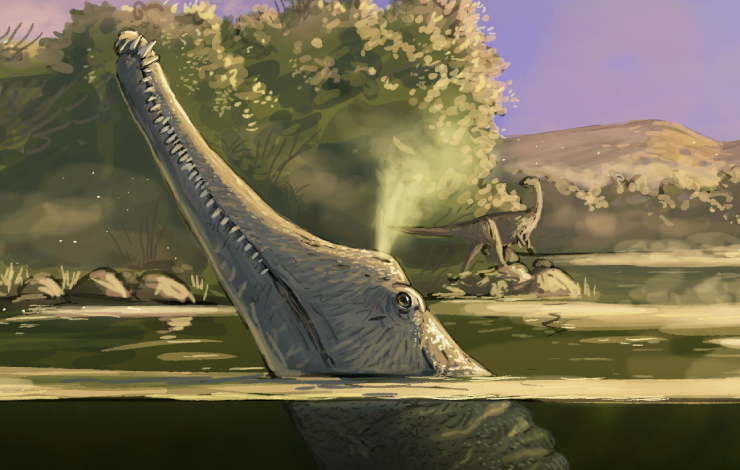29-03-2023

Víctor López-Rojas and Octávio Mateus - the first a PhD student and the second a professor from the Department of Earth Sciences at the NOVA School of Science & Technology | FCT NOVA - have discovered a new species of phytosaur, a bizarre crocodile-like reptile from the Late Triassic, with over than 215 million years of sediment from rivers and lakes in Jameson Land, Greenland. The discovery was made together with other specialists from Denmark and Germany on an international expedition in 2012, but was only now formalized with its publication in the prestigious Journal of Vertebrate Paleontology.
Phytosaurs lived in the Triassic on almost all continents (except Antarctica and Oceania) and resemble crocodiles, lived like crocodiles, but are not closely related to them. They have a particular characteristic that sets them apart from crocodiles and other reptiles: "These reptiles have a retracted nose to the back of the skull, near the eyes," says Víctor López-Rojas, PhD student from FCT NOVA, the first author of the study. This relocation modified the skull in different ways that allow paleontologists to classify their species.
The fossil was found by Octávio Mateus and colleagues on the 2012 expedition: "A site that produced at least four phytosaurs in a single layer, which is rare and spectacular," explains the professor. Paleontological expeditions to Eastern Greenland have been conducted since the early 19th century, but it was only during expeditions in 2012 and 2016 that the first phytosaur remains were found.
The new species from Greenland, "Mystriosuchus alleroq", includes portions of the skull, but mainly postcranial bones. The remains of at least four individuals, from babies to mature adults, allowed scientists from FCT NOVA, University of Copenhagen and Geomuseum Faxe (Denmark), University of Bonn, as well as the Museum of Natural History Bamberg (Germany) to compare not only the relationship between species to describe it as a new species, but also its ontogeny.
Víctor López-Rojas is studying the evolution and lifestyle of European phytosaurs, which have some characteristics in their limbs and vertebrae that make him think they were more aquatic and different.